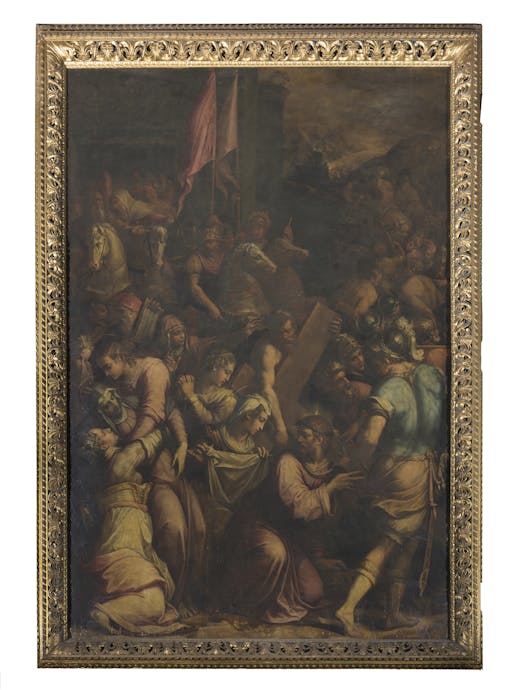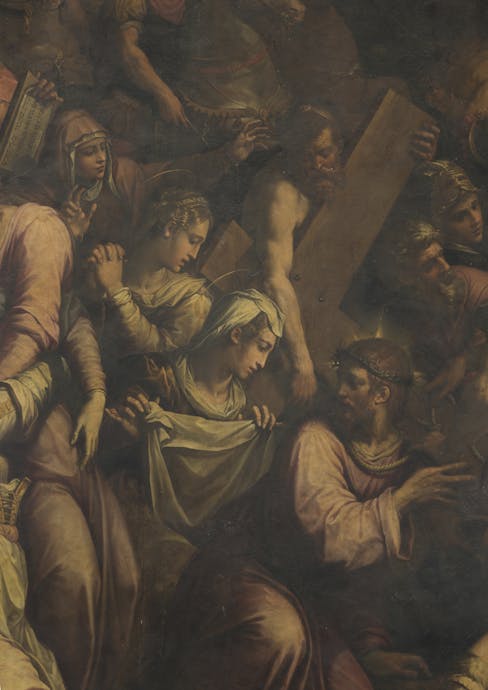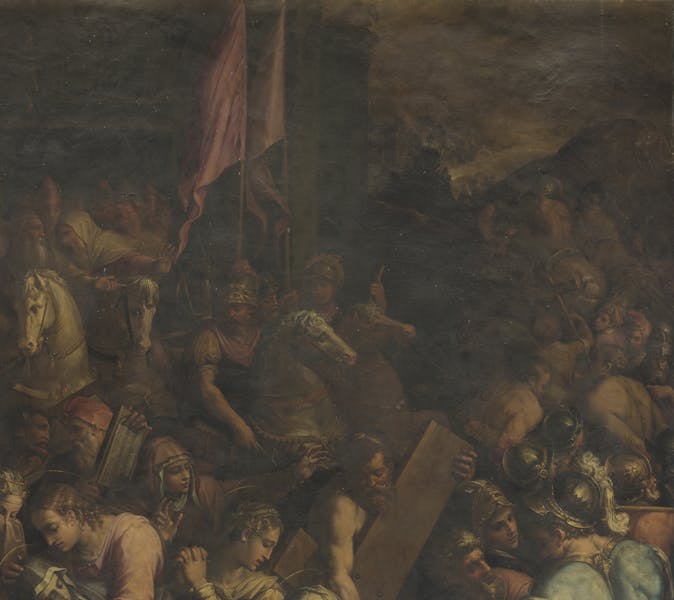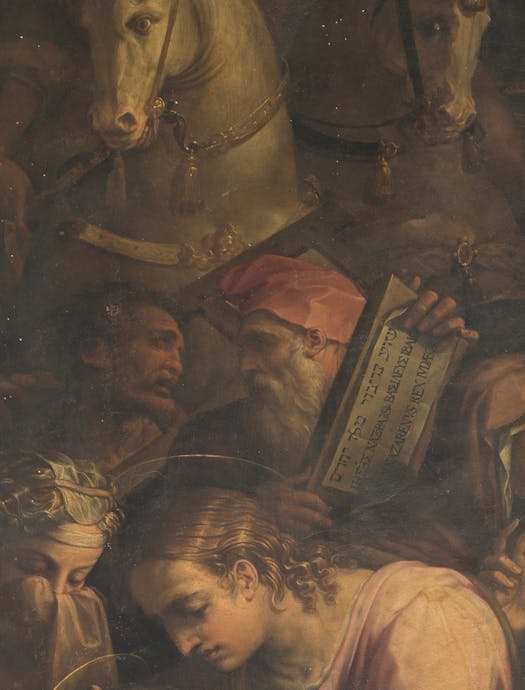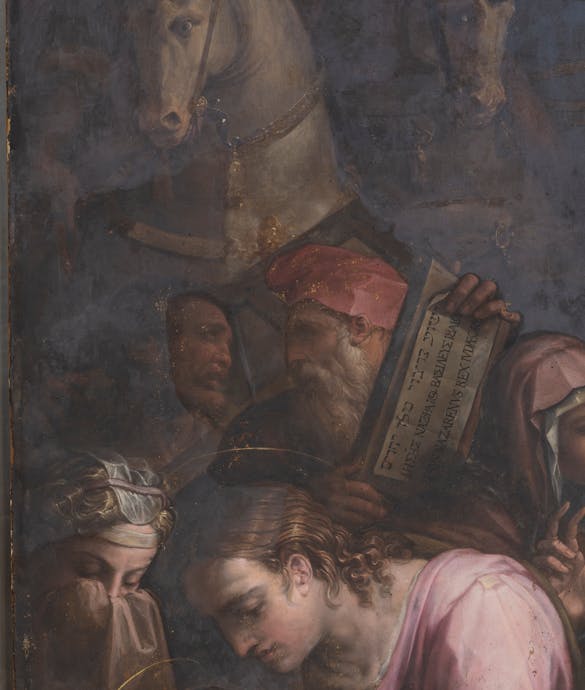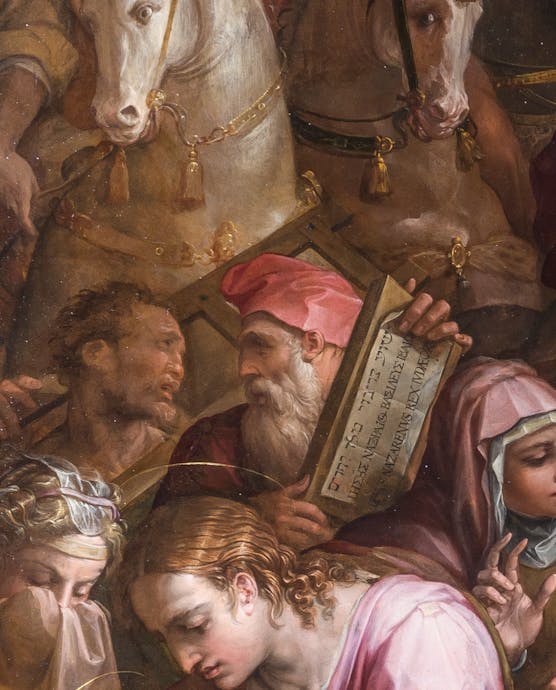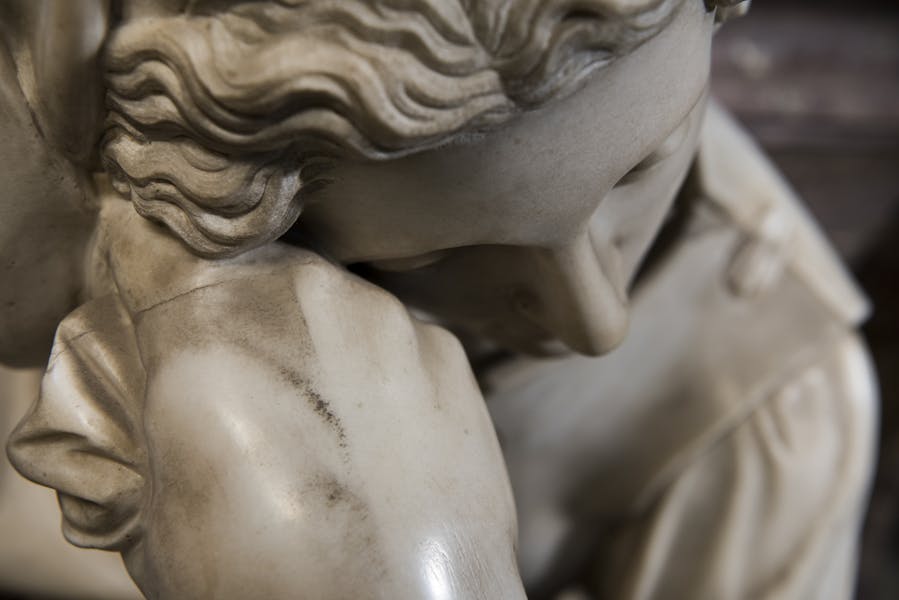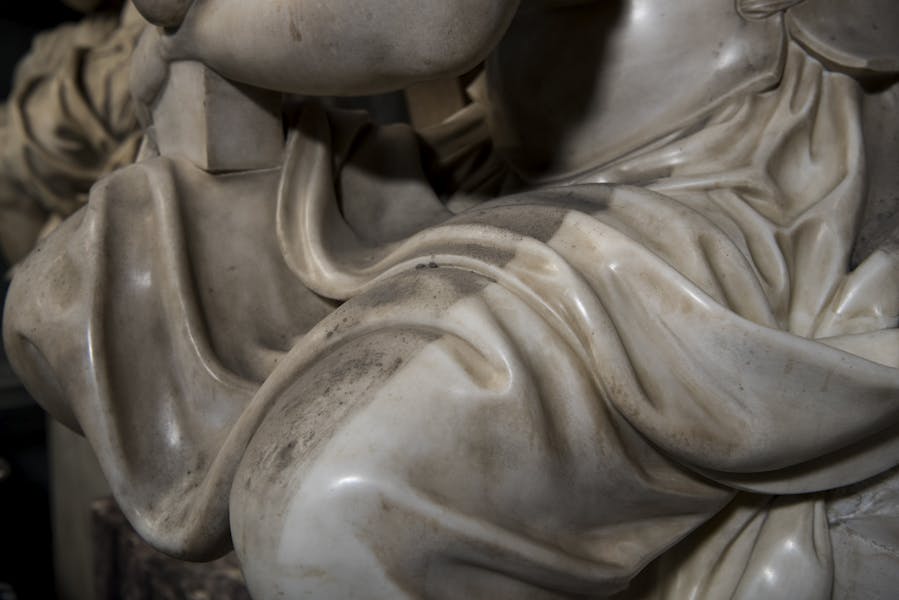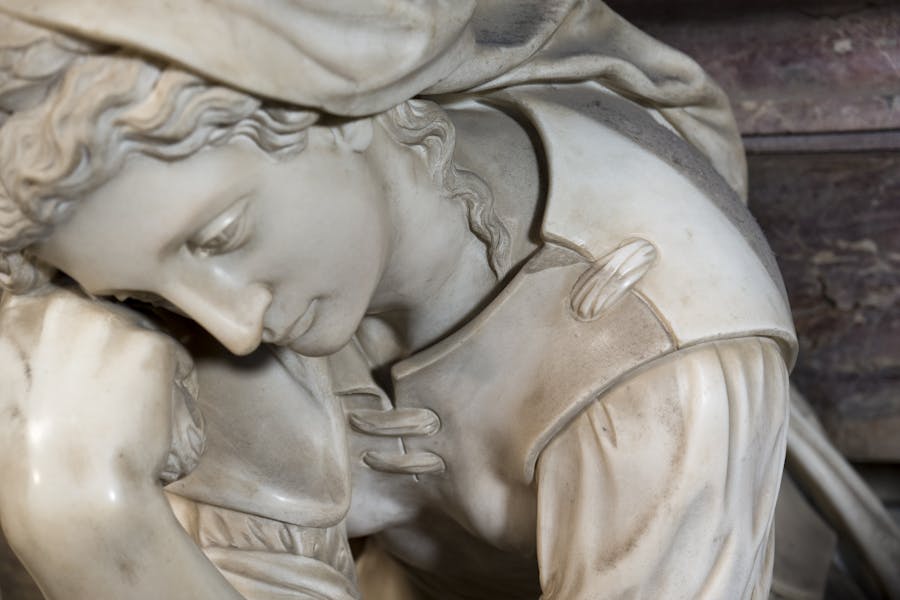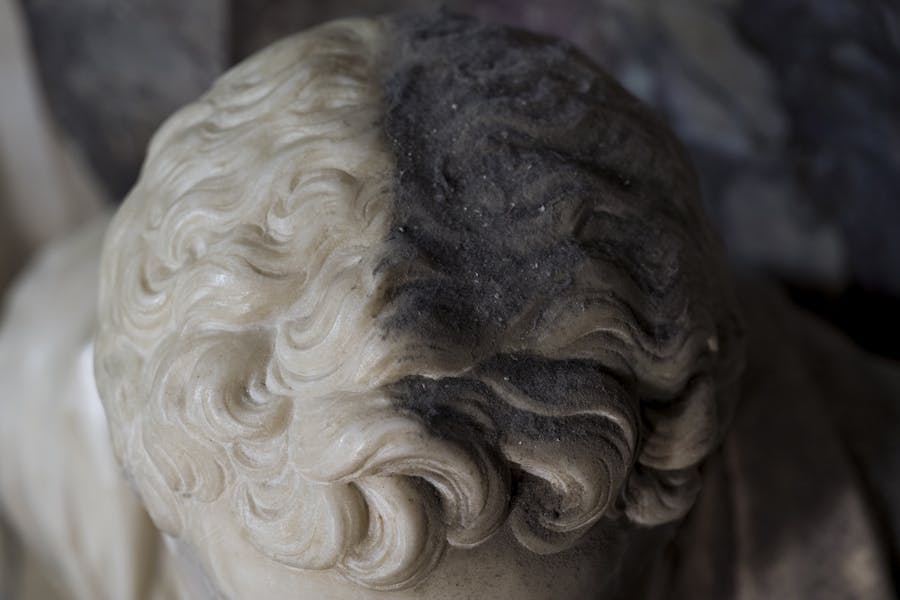
The Monument to Michelangelo and Vasari's "Way to Calvary"
The restoration of Giorgio Vasari's altarpiece depicting the Way to Calvary and Christ Meeting with Veronica on the Buonarroti altar was completed thanks to a fundraising project christened In the Name of Michelangelo, on whose behalf 132 donors mobilised in fully 14 different countries.
The altarpiece, which still showed damage in its lower part caused by the flood of 1966, was subjected to meticulous restoration in an effort to restore its full readability. Both the large wooden frame and the picture itself were given anoxic chamber treatment for woodworm, in other words they were wrapped in huge plastic bags in which oxygen was gradually replaced by nitrogen. This was followed by restoration proper and the wooden frame was restored to its full functionality.
The painting had been tarnished by a patina which had altered its colours due to yellowing of the protective varnish applied during restoration in the 1970s. The lower part revealed serious lifting of the preparatory layer through decohesion and recent paint drops caused by the paint layers' lack of adhesion to the support, all as a result of the flood of 1966. The rest of the panel also revealed the same phenomena due to the wood shrinking and along the joins of the planks forming the panel A series of non-destructive diagnostic examinations of the painting (IR reflectography, X-ray, X-fluorescence photography) were followed by careful selective cleaning performed with specially prepared blends on the various layers of repainting and retouching resulting from previous restoration. The following phase involved making good the painted surface. Paint drops were filled wherever possible without interfering with the original brushwork and the painting finally regained in full the vibrancy of composition and palette that was such a feature of the original work.
As a result, certain details emerged which had not previously been visible, such as the faces of Michelangelo, in the guise of Nicodemus as he gazes towards his tomb, and of Rosso Fiorentino, sporting a dark red cap in the guise of Joseph of Arimathea.
In addition to the restoration of the altarpiece, the funds collected were also used for an intervention on Michelangelo's monumental tomb to the right of the painting. Both works form part of a single project designed by Vasari, in which the great sculptor's tomb sits beside the Buonarroti family altar. The intervention focused primarily on removing the loose layers of dirt that had formed since the last restoration performed ahead of the Jubilee in 2000. The layer of wax applied at that time, though yellowed with age, had prevented the dust and dirt from penetrating and forming a compact crust on the surface, which made their removal a simple job of routine maintenance that has shed a new light on the different types of marble used. The operation involved the more than fifty architectural elements making up the monument such as marble slabs, decorative panels, mouldings and dividing elements, not to mention the sculptures in the round depicting Sculpture, Painting and Architecture and the bust of Michelangelo himself. And finally, a comparison of the work with an Alinari photograph of 1890 revealed that the Christogram frescoed in the centre of the tondo born by two winged angels was no longer legible and so it was decided it to repaint it in completely reversible watercolours to ensure that all memory of it is not lost.
The restoration site was open to the public and aroused immense interest in visitors who were able to follow the work in progress.
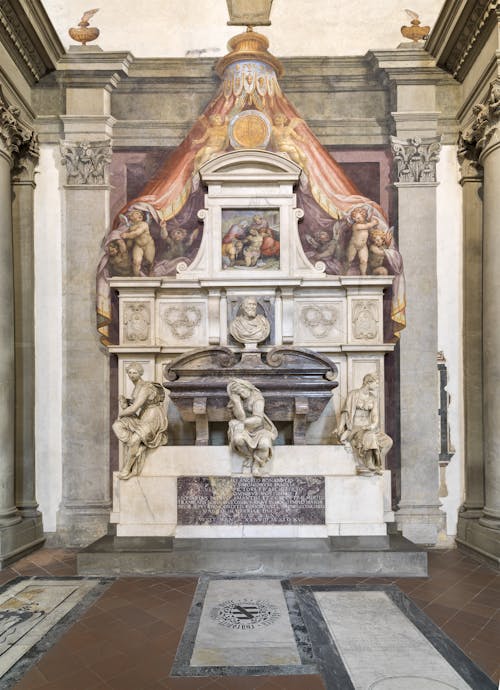
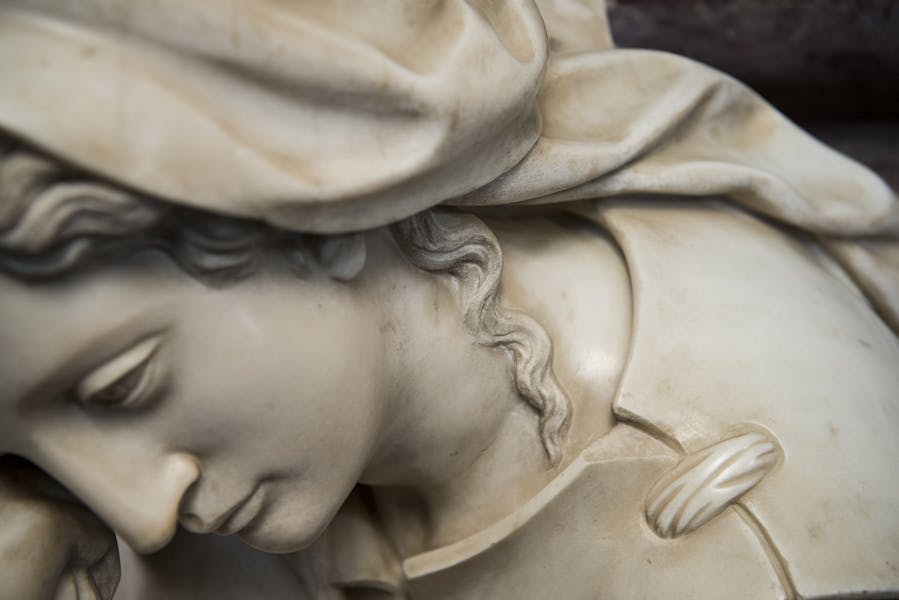
A detail of Valerio Cioli's Sculpture after the cleaning
